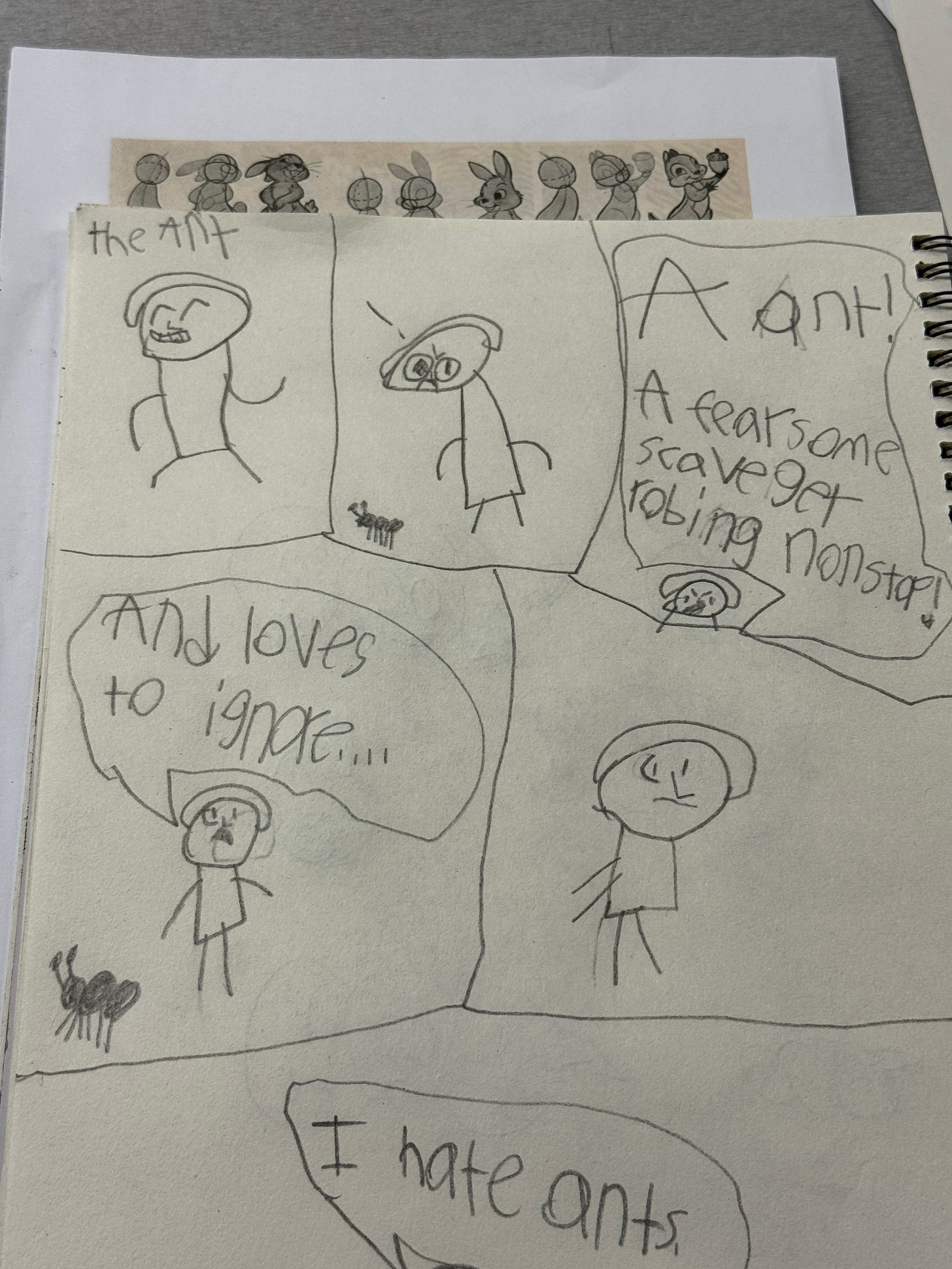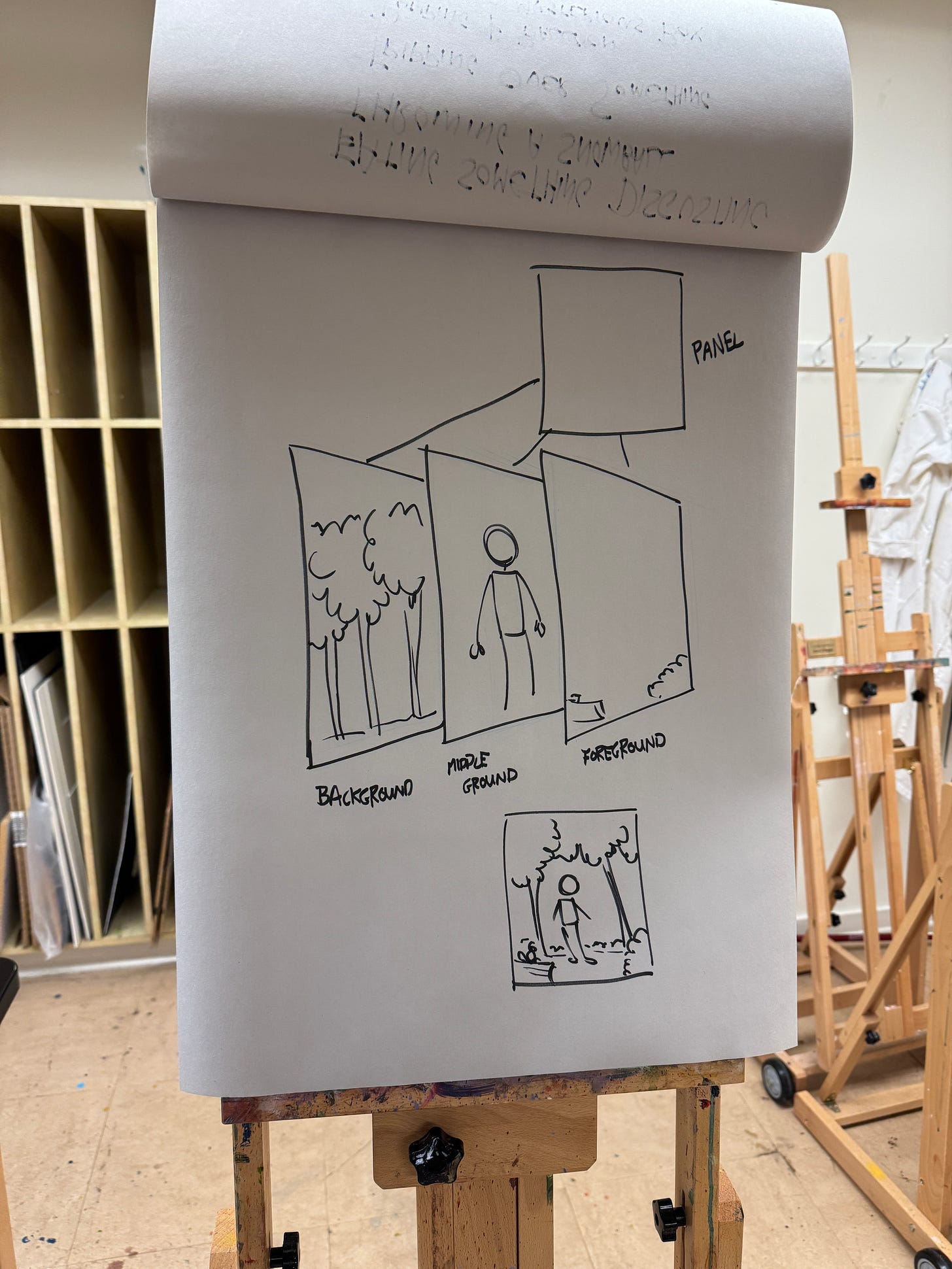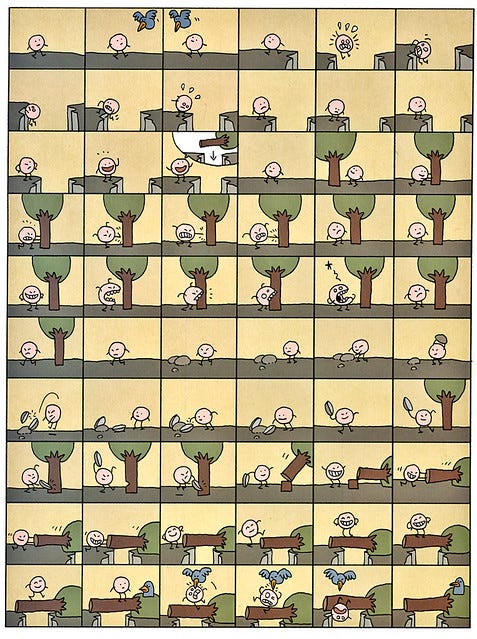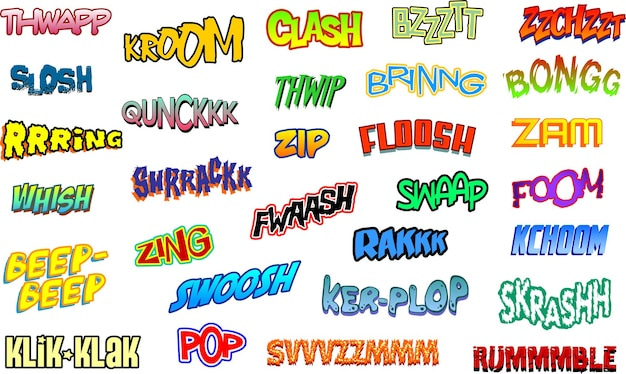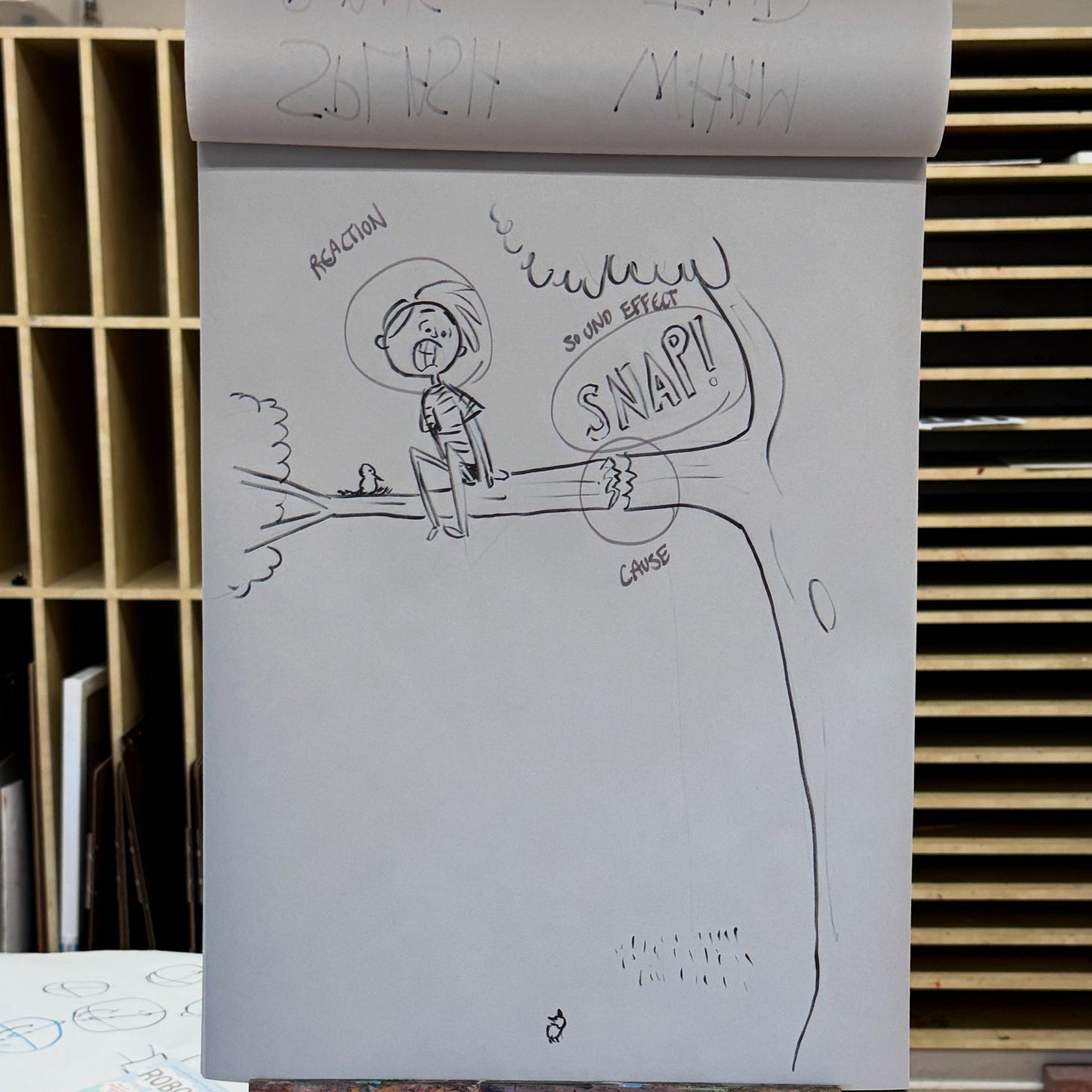Comics Without Words Part II: A Three Day Workshop
More secrets to teaching comics without words to kids
Sorry this post is a day late. I have had a busy week finishing up my Monsters & Myths class at the McConnell Arts Center and a book talk at St. Mary’s Theater and Opera House yesterday. I am officially done with comic classes and presentations and I get to channel all the students’ enthusiasm into working on my own stuff!
This is the second of two posts on how I ran my Comics Without Words workshop. If you want to see how it all began, you’ll definitely want to read my first post about it. Or maybe read this one first and go back, if you’re interested, to the beginning.
If you read the first post, you might remember that we had finished a lesson on timing.
You may remember that I didn’t teach timing very well. But here’s a comic from a young kid from the next week’s workshop on Monsters & Myths who has a really good grasp of timing. Look at the second to last panel, what’s know as a “breather panel.” Most kids wouldn’t think to put that there, and many adults wouldn’t either. But it allows for a quick moment of contemplation before the turn. What’s more impressive is that he dashed this off in about five minutes. We have a future cartoonist on our hands!
Day Two cont’d
During the second half of the day we working on drawing environments. Most kids will draw a scene, but not think about, or draw, where it happens.
So we spent some time just working on drawing environments with no people. Here were their choices: Kitchen; Park; School hallway; Bedroom; Space ship; Beach; Supermarket; Street corner; Barn. The emphasis was capturing an environment with a few simple details.
We also discussed the concept of foreground and background. Here’s my visual.
After this activity, we worked on creating minicomics. Most kids didn’t need a prompt for this one, but if they needed one, it was to draw a character experiencing a situation where things are not what they seem.
Day Three
To begin, we drew our own versions of Mr. O comics. Mr. O, by Lewis Trondheim, features a simple character who encounters the same problem in each 60 panel comic: he needs to get over a chasm. And he is never successful. The kids love creating their own scenarios where Mr. O tries, but fails, to get across.
The book of Mr. O is sadly out of print, but a few comics are easy to find online for reference. Here’s one:
After that, we created a four panel comic where a character is stung by a wasp. I wanted to see line of action, exaggerated expressions and poses, environemnts, and emanata.
Next, we created our own sound effect stylings.
I gave them a few common sound effects, like “crack” and “boom” and had them style a sound effect font for it.
Then, they had to create a one panel comic using the sound effect. They had to include a source (what was making the noise) and a reaction (how the character responded. Here’s my example:
I must not have taken any student pictures on this day because I have no student examples! Sorry.
Finally, we did a comic jam. This is a fun and simple exercise. Everyone arranges the desks in a circle and each student makes a blank 8 page mini comic and starts a comic on page 1. Then, everyone passes to the right, looks at page one, and draws the next panel on page 2, keeping the character design and setup the same. They pass again and the next student looks at page 2, but cannot look at page 3. Repeat fort the remaining pages until everyone is finished. Then the get their comics back and can read what transpired from their idea, as well as how the rest of the comics turned out.
And that was it! The workshop was done. I’ll post about my Monsters & Myths class next, because that was where I felt like I did my best work with what I had learned previous.
As always, let me know if you have any questions! I’m happy to help! And I will be converting those two drawings I did into worksheets soon. I’ll post those here.
David


